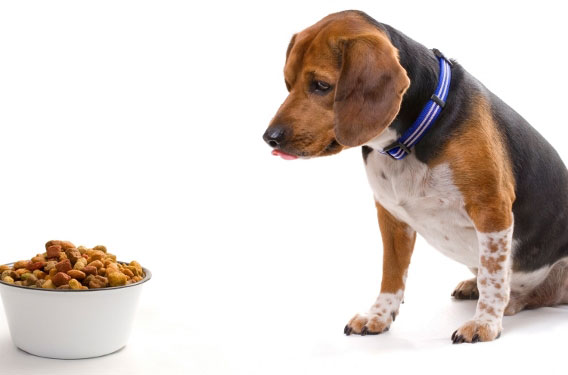The Skinny on Diet Pet Foods
Low-cal pet foods vary widely in calorie content and often have misleading feeding directions, study finds
Pet owners buying food aimed at controlling weight in their plump cats and dogs might not be getting accurate information about those foods, even if they can figure out the often-confusing claims on the labels.

“There is so much information—and misinformation—about pet foods, it’s understandable that people are confused about what to feed their dogs and cats,” says Lisa M. Freeman. Photo: iStock
That’s according to a study done by researchers at the Cummings School of Veterinary Medicine that found that pet owners face confusing variations in calorie counts and recommended portions, not to mention a wide price range for low-calorie pet foods.
The study, published in the January 1 issue of the Journal of the American Veterinary Medical Association, examined nearly 100 commercially available foods that claimed to control animals’ weight.
The results may be significant for owners whose cats or dogs are overweight or obese, according to study co-author Lisa M. Freeman, J86, V91, N96, a veterinary nutritionist at the Cummings School. Between 22 and 44 percent of dogs and cats in the United States are overweight or obese.
“There is so much information—and misinformation—about pet foods, it’s understandable that people are confused about what to feed their dogs and cats,” says Freeman. “To counteract these myths, people are accustomed to turning to the labels on food—but, as this study shows, packaging might not always be a reliable source of information.”
Under federal guidelines, pet foods labeled “lite,” “light,” “low calorie” or “less calorie” must provide details about the caloric content. Foods with a light, lite or low-calorie designation must also adhere to a maximum kilocalorie per kilogram restriction. But, Freeman points out, more than half of the foods evaluated in the study exceeded this maximum. Foods without these designations currently are allowed, but not required, to provide the caloric content on the label. Efforts are under way to make this information required on all pet food labels.
Another important issue identified in the study was the high variability in feeding recommendations for weight loss, based on the food labels that were evaluated. In fact, for most of the diets, pets would not lose weight or would actually gain weight if owners adhered to the feeding directions and did not adjust according to their pet’s individual calorie requirements.
Obesity in dogs and cats is associated with numerous diseases, including pancreatitis, osteoarthritis, skin disease, diabetes and respiratory tract diseases—and may contribute to a shorter lifespan, according to earlier studies.
Calorie density was obtained from the product packaging and by contacting manufacturers. Freeman and co-author Debbie E. Linder, V09, studied 44 canine and 49 feline diets.
Among the findings is that dry dog foods range in calorie density from 217 to 440 kilocalories per cup (kcal/cup) and have a recommended intake that ranged from 0.73 to 1.47 times the dog’s resting energy requirement. The diets also varied wildly in price—from 4 cents to more than $1.10 per kilocalorie.
Similar findings were made for wet dog food (189 to 398 kcal/can) and cat food (235 to 480 kcal/cup) marketed for weight control.


